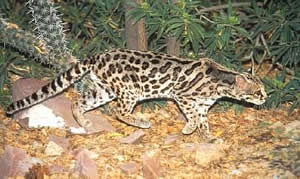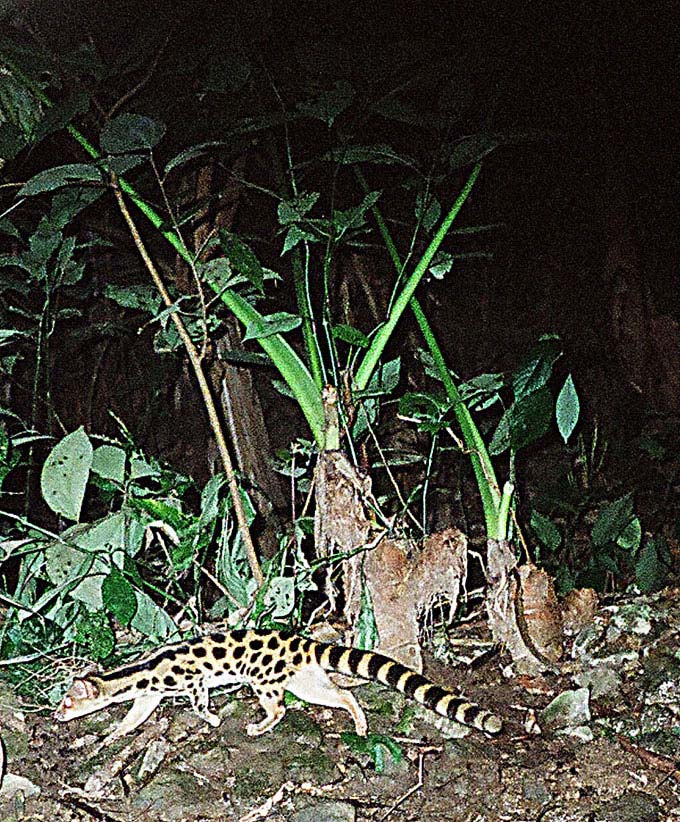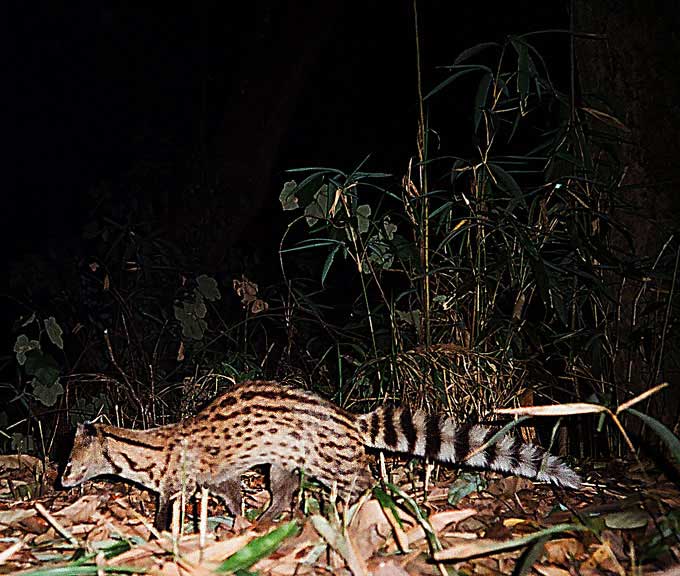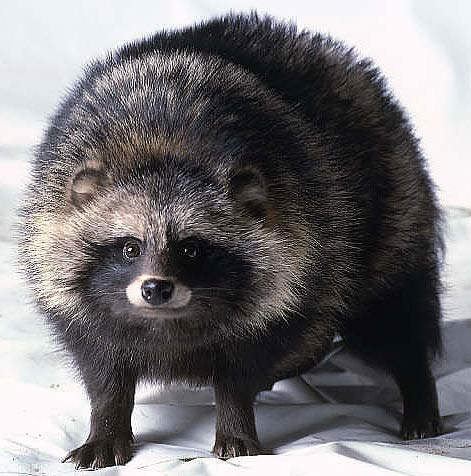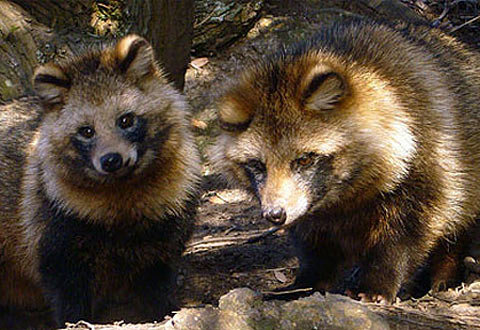Evidence for evolution using the chromosome fusion found in humans (a.k.a the sciencey stuff)
All members of Hominidae (chimpanzees/bonobos, gorillas, humans, orangutans) have 24 pairs of chromosomes, except humans. Homo sapiens have 23 pairs, or 46 total chromosomes…so a pair of chromosomes are missing.
If an entire pair of chromosomes got lost it would have killed us, so there are only two possibilities. If we share a common ancestor with the great apes, that ancestor either had 48 or 46 chromosomes. All the great apes have 48 so it is more likely that the common ancestor had the same. So, if it had 48, what must have happened is that one pair of chromosomes fused together. If evolution is correct, we should be able to look at the genome and find two chromosomes that in the great apes correspond to one chromosome in humans.
So let's simplify the structure of the chromosome:
You have a centromere in the center sandwiched between 2 telomeres that are made up of many small DNA repeats running to the end of the chromosome. The section that lies right before the telomeres is a unique pattern called the pre-telomeric region.
If we type this out short hand:
(TeloPreteloCentroPreteloTelo)
The telomere at the end of DNA functions to protect the ends during replication, but the ends are very vulnerable to mutations or deletions. They protect the ends through long stretches of simple DNA sequences that are repeated many times (TTAAAGGG TTTAAGG TTAGGGG). The telomeres tend to shorten over time and are restored by an enzyme which lengthens the sequence. If the telomere becomes too short, errors in duplication can occur and lead to cancers.
So, hypothetically, if two chromosomes fused at their telomeres …what should we expect to find?
We should find at least…
- Not one centromere but two centromeres
- Not a centromere in the center, but two additional telomere sequences together
- Not two pre-telomeric regions but four pre-telomeric regions
In summary it should resemble this:
(TeloPreteloCentroPreteloTeloTeloPreteloCentroPreteloTelo)
Do we have any chromosomes that look like this?
Human chromosome 2 to the rescue!
Chromosome 2 is the second largest human chromosome, spanning more than 243 million base pairs (building blocks of DNA, guanine-cytosine and adenine-thymine), it represents almost 8% of the total DNA in cells and contains at least 1,491 genes. The human chromosome 2 is accepted to be a result of an end– to–end fusion of two ancestral chromosomes back in our ape past.So can we find all of the required parts above?
There are DNA sequences in the human chromosome 2 that are identical to sequences in the chimpanzee, but instead of being located in one chromosome the sequences for the human chromosome 2 are found in two chimpanzee chromosomes. Our chromosome 2 is made up of the chimpanzee chromosome 13 which forms the short arm (2p) and the chimpanzee chromosome 12 which forms the long arm (2q). That is, most of the genes in the chimpanzee chromosome 13 are found in human 2p, and most of the genes in the chimpanzee chromosome 12 are in human 2q. This is also true for the more distant gorilla and orangutan.

Normally a chromosome has just one centromere in the center but in humans, chromosome 2 has remnants of a second called a vestigial centromere. The active centromere of the short arm (2p) lines up with the chimp chromosome 13 centromere and the inactive long arm centromere (2q) correspond with the chimp chromosome 12 centromere. So both are found exactly where expected!
Remains of the telomere sequences from chimp chromosomes 13 and 12 are located in the center of the human chromosome 2, where the ancestral chromosomes fused.
We have even located the precise site of chromosome 13 and 12 fusion on the human chromosome 2 at base number 114, 455, 823 (give or take 15)!
The predicted sequence for the fusion is present. The chimpanzee telomere in 13 that fused to the telomere of 12 to create the full human chromosome 2 fused in a way that when we line them all up together to compare, we have to read the inactive sections in the long arm the opposite way. So this means that we not only have all the parts that correspond with the chimpanzee chromosomes 13 and 12, but they are also reversed in the 2nd part of the chromosome!
13/short arm 2p------------> <----------- 12/long arm 2q
(TeloPreteloCentroPreteloTelooleToleterPortneColeterPoleT)
Having 46 chromosomes is not better than having 48 so there is no obvious reason why a designer would fuse two chromosomes in humans and leave them unfused in apes. The only advantage possible would be if the fusion of the two telomeres caused a new gene or a new activity at the fusion point.
If the fusion did give an advantage, it would come from new genes being created or by a gene’s expression being changed in some way. There are a lot of easier ways to create new genes or to change gene activities, especially for a designer. Currently, there is no evidence for an advantage for the fusing two chromosomes.
The fusion point of the two telomeres in the short arm (2p) and the long arm (2q) as well as the inactive pre-telomeric region and centromere have now built up mutations but this is even more evidence for common ancestry. Evolution predicts that DNA collects random mutations, and that sometimes they do not do anything at all and get passed on. And even though there has been several million years of deterioration, there are sections that match even up to 90% to their corresponding sequences.
A common designer predicts the DNA mutations have a purpose … but this fusion does not give humans any advantage. This fusion is not the only difference between people and apes, as there are millions of other changes throughout the chromosomes. It is these other changes that we find our differences when we look at the great apes.
The only way this fusion makes sense is through a common ancestry with apes, where our common ancestor had 48 chromosomes and at some point after we split away from the chimpanzee the 13 and 12 chromosomes fused into our chromosome 2. This fusion doesn't “make” us human and it doesn't give us an advantage. The fusion was most likely just another mutation that happened to occur in the highly vulnerable telomere.
If you don’t accept evolution, what then is the purpose of creating a chromosome that only appears to be two ape chromosomes that fused but actually isn't Or what’s the purpose for creating a chromosome only for humans that actually IS from the fusing of two chromosomes…but that fusion does nothing at all?
Part 2:
Are we alone out there in the chromosome fusion world?
We had a chromosome fusion in our past, but are we the only ones? Definitely not! Chromosome fusions are absolutely found in other species! So, since we can't look at our 47 chromosome ancestor and ask how they accomplished it all…lets look at some things that are alive and well today.
 |
| Indian muntjac |
A great (and cute) example are the muntjacs, also known as the Barking Deer. Most people don’t know what these animals are but they are the oldest known deer alive today, with their family dating back to possibly 35 million years. There are different subspecies that inhabit different areas including South Asia, Sri Lanka , southern China , Indonesia , Taiwan , and Japan , and it is because of these separate areas that the muntjacs have become so special.
The muntjacs, particularly the Indian muntjacs, have very interesting chromosome numbers. Remember we were just throwing a fit about a change from 48 to 46 above?…well, the female Indian muntjac is sitting at 6 chromosomes, and the males are not much better at 7 chromosomes. The females and males though have different chromosome numbers, mate and reproduce just fine. This is an example of an extreme reduction in chromosome numbers that has resulted from many fusions in several chromosomes.
Other species with variation in chromosome numbers…
§ Tufted deer – 46 F/M, 47 F/M, and 48 F/M variations - closest living relative
§South China muntjacs – 46 F/M
§
§ Myanmar and Thailand muntjacs – 14 F, 13 M
§ Anhui China muntjacs – 8 F, 9 M
§ Indian muntjacs – 6 F, 7 M
Full list: http://mbe.oxfordjournals.org/content/17/9/1326/T1.expansion.html
Full list: http://mbe.oxfordjournals.org/content/17/9/1326/T1.expansion.html
| Tufted deer |
The Indian muntjacs possess the lowest chromosome numbers of any mammal with 6 F and 7 M. The Chinese muntjacs are on the same level as us with 46 chromosomes, but variants of 47 and 48 are found in both sexes. The Indian and Chinese populations though have very different chromosome numbers, can actually produce viable offspring hybrids that will end up having 27 chromosomes total.
Based on observed numbers in muntjacs, they have a chromosome number change rate of 1.08 - 2.11 per million years! This change is among the fastest in vertebrates! Within the muntjac subfamily, the fastest evolutionary rate is found in the Myanmar and Thailand lineages (14F, 13M) in which diverged from each other in only about 0.5 million years. Much research needs to be done on the driving force for these rapid changes…but nevertheless, it's just…badass.
Also included in the group of organisms that have chromosome number variations is the swamp wallaby (10 F and 11 M), 3 species of cottontail rabbits (38, 42, and 46) and the gibbon (38, 44, 50, and 52). In a recent report on of a species of island mice, their chromosome numbers nearly cut in half in less than 500 years. That’s what a small breeding population and a fast generation time does to you!
In the end, chromosome fusions look dramatic and confusing but animals have been fusing their chromosomes probably since the beginning. We have 2 less chromosomes than the great apes, and the Indian muntjac has up to 42 chromosomes less than the Chinese muntjac (and they can probably interbreed).
Chromosome fusions are so common...is there really a need for a creator?
Sources:
http://mbe.oxfordjournals.org/content/17/9/1326.full#xref-ref-58-1
http://evolutionarytransitions.blogspot.com/2011/10/chromosome-fun.html
http://www.evolutionpages.com/chromosome_2.htm
http://mbe.oxfordjournals.org/content/17/9/1326/T1.expansion.html
Sources:
http://mbe.oxfordjournals.org/content/17/9/1326.full#xref-ref-58-1
http://evolutionarytransitions.blogspot.com/2011/10/chromosome-fun.html
http://www.evolutionpages.com/chromosome_2.htm
http://mbe.oxfordjournals.org/content/17/9/1326/T1.expansion.html
















